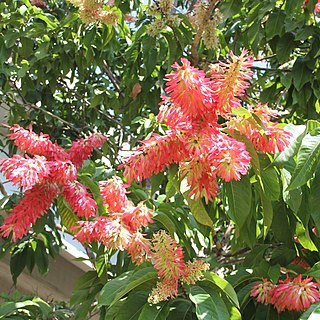blunt to acute apices, 3-nerved, plicate just above the tube, the tubes more pubes-cent without than within; petals 12-18 mm. long, adnate to the tube for 2-5 mm., occasionally auriculate or tubular near the peak of adnation; ovary trigonous; styles 3, 2-5 mm. long, their inner surfaces stigmatic. Achenes 8-12 mm. long, 4-5 mm. broad, yellowish-brown; facies ovate, not sulcate, often strongly veined or verrucose.


